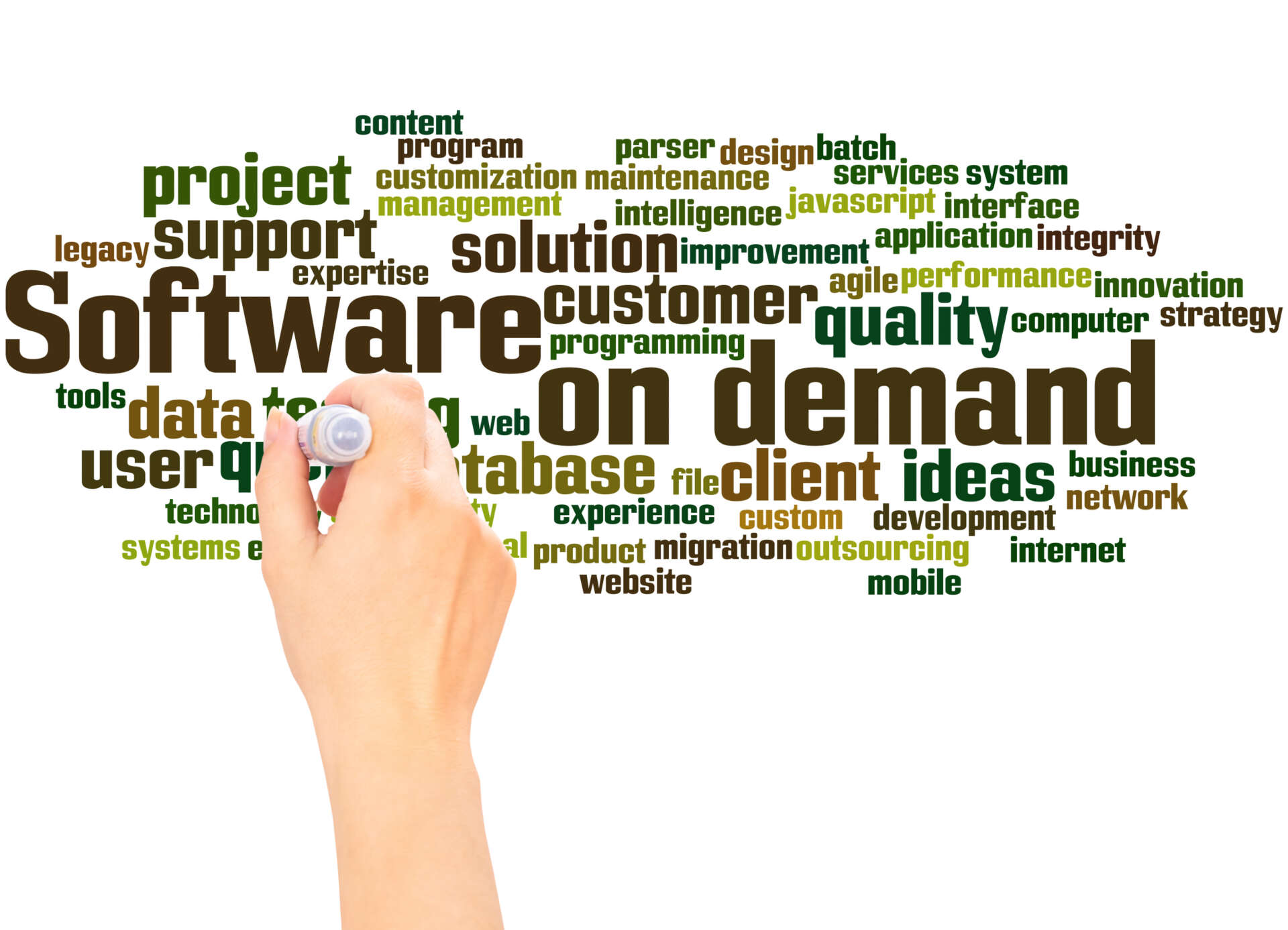The Enduring Dominance of WordPress
For well over a decade, WordPress has reigned supreme in the world of content management systems (CMS). Its ubiquity is staggering, powering a significant percentage of all websites on the internet. This widespread adoption isn’t accidental; it’s the result of a potent combination of factors that have made it the go-to platform for everyone from individual bloggers to large corporations. Understanding the pillars of its success is crucial when evaluating any potential New CMS alternative challenging WordPress.
One of the primary reasons for WordPress’s enduring dominance is its accessibility. It offers a relatively low barrier to entry for creating and managing a website. The core software is free and open-source, allowing anyone to download and install it. Its user-friendly dashboard, even with its evolutionary changes over the years, remains intuitive enough for non-technical users to publish content, manage media, and customize basic site settings. This ease of use democratized web publishing, empowering millions to get online without needing extensive coding knowledge.
Beyond ease of use, the strength of the WordPress ecosystem is unparalleled. A vast repository of themes and plugins extends the platform’s functionality almost infinitely. Whether you need e-commerce capabilities (powered largely by WooCommerce), advanced SEO tools (like Yoast SEO), contact forms, security enhancements, or complex membership features, chances are there’s a plugin for it. This rich ecosystem means that WordPress can be adapted to suit a wide variety of website types and business needs, from simple blogs and portfolios to complex business sites and online stores.
The open-source nature of WordPress also fosters a massive, active community of developers, designers, and users. This community contributes to the platform’s core development, creates themes and plugins, offers support in forums, and shares knowledge through tutorials and documentation. This collective effort ensures that WordPress is constantly evolving, fixing bugs, improving security, and adding new features. The sheer size of this community provides a level of support and flexibility that proprietary systems often struggle to match.
Furthermore, WordPress has proven itself to be highly adaptable. While it started primarily as a blogging platform, it quickly evolved into a full-fledged CMS capable of powering complex websites. Its architecture, based on PHP and MySQL, is robust and flexible enough to handle significant traffic and data. Regular updates and maintenance releases, like those discussed in articles about WordPress maintenance releases explained, ensure the platform remains current and secure, addressing potential vulnerabilities and improving performance.
Despite its strengths, WordPress isn’t without its criticisms. Performance can sometimes be an issue, particularly with poorly coded themes or an excessive number of plugins. Security, while constantly being addressed by the community and core developers, requires vigilance from users, including regular updates, strong passwords, and potentially security plugins or services. The complexity introduced by a large number of options and settings can also be overwhelming for absolute beginners or those seeking a highly streamlined experience. Customizing WordPress beyond basic theme options often requires diving into code or relying on page builders, which can add another layer of complexity.
The sheer scale of WordPress’s presence in the market creates a certain inertia. Businesses and individuals continue to choose it because it’s familiar, there’s ample talent available to work with it, and the initial cost (for the software itself) is zero. However, this dominance doesn’t mean the market is stagnant. The digital landscape is constantly changing, and new technologies and user expectations are creating opportunities for innovative platforms to emerge and challenge the status quo. This dynamic environment is precisely what fuels the development of a New CMS alternative challenging WordPress.
Why Seek a New CMS Alternative?
Given the undeniable success and vast ecosystem of WordPress, one might wonder why there’s a need for alternatives at all. The answer lies in the diverse and evolving requirements of modern web development and content management. While WordPress serves a broad audience exceptionally well, its very design and historical evolution mean it might not be the perfect fit for every project or every user.
One significant driver for seeking alternatives is the desire for improved performance. WordPress, especially with numerous plugins and complex themes, can sometimes suffer from slower loading times. While optimization is possible, some newer platforms are built with modern web technologies and performance considerations from the ground up, potentially offering faster load times out-of-the-box. Speed is not just a technical detail; it directly impacts user experience, SEO rankings, and conversion rates.
Security is another major concern that leads users to explore other options. Due to its popularity, WordPress is a frequent target for hackers. While core security is strong, vulnerabilities often arise from third-party themes and plugins, or from user negligence in keeping things updated. Some newer platforms may offer a more locked-down or inherently secure architecture, reducing the attack surface and administrative burden for users. This is particularly important for businesses handling sensitive data or operating in highly regulated industries.
The user experience, particularly in the administrative backend, is another area where some find WordPress lacking compared to newer systems. While WordPress has made strides with the block editor (Gutenberg), some users still find the process of building complex page layouts or managing content flows cumbersome. Newer CMS platforms often prioritize intuitive drag-and-pound interfaces, headless architecture (which separates content creation from presentation), or streamlined workflows designed for specific content types or publishing models. The comparison between different platforms often highlights these usability differences, as seen in discussions around content management systems in general or specific comparisons like Wix vs. web developers which touches on ease of use differences.
Scalability can also be a factor. While WordPress can scale, particularly with managed hosting solutions and expert optimization, some very large or complex applications might find dedicated application frameworks or more specialized CMS platforms better suited to handle massive amounts of traffic or intricate data structures. Projects requiring highly customized functionalities or integrations might also look for platforms offering more flexibility at a fundamental level.
Specific use cases may also push users towards alternatives. For instance, a company primarily focused on e-commerce might find platforms like Shopify or Magento (as discussed in various articles like Magento 2 vs. Shopify or Why Magento 2 is the best ecommerce platform) to be more tailored to their needs than WordPress with WooCommerce, despite the latter’s popularity. Similarly, developers building static sites for performance or security reasons might opt for static site generators over a dynamic CMS like WordPress.
Cost is another consideration. While the WordPress software is free, the total cost of ownership can add up quickly when factoring in premium themes, plugins, hosting, and potentially developer time for customization and maintenance. Some alternative CMS platforms, while perhaps having an upfront cost or subscription fee, might offer a more predictable or potentially lower total cost depending on the project’s needs and the features included in the platform.
Finally, simply put, innovation drives change. As web technologies advance, so do the possibilities for building better, faster, and more user-friendly content management experiences. New platforms are developed specifically to take advantage of modern frameworks, architectures (like headless or serverless), and development paradigms. These platforms aim to address the known limitations of older systems and offer capabilities that weren’t feasible when WordPress was first conceived. It is this perpetual cycle of improvement and specialization that makes the emergence of a New CMS alternative challenging WordPress an anticipated development.
Introducing a New CMS Alternative Challenging WordPress
The digital landscape is constantly evolving, and with it, the tools we use to build and manage our online presence. While WordPress has held the top spot for an extended period, innovation doesn’t stand still. A New CMS alternative challenging WordPress is entering the arena, aiming to carve out its niche by offering a fresh perspective on content management and website creation. While specifics vary between emerging platforms, the general impetus behind them is often to address perceived shortcomings in the existing dominant players and leverage modern technological advancements.
Such a new platform typically doesn’t set out to be merely a clone of WordPress. Instead, it often aims to differentiate itself through key architectural decisions, target audience focus, or novel approaches to common CMS challenges. For instance, a new alternative might be built on a modern, faster technology stack, potentially offering inherent performance advantages. It might adopt a headless architecture from the start, providing greater flexibility for delivering content across multiple channels (websites, mobile apps, IoT devices) beyond a traditional website.
The user interface and overall user experience are also prime areas for differentiation. Recognizing that the WordPress dashboard can become cluttered and complex, especially with many plugins, a new CMS might offer a cleaner, more intuitive interface. This could involve streamlined content creation workflows, simpler site structure management, or more integrated design tools that reduce reliance on third-party page builders.
Security is another potential selling point for a New CMS alternative challenging WordPress. By building on a modern codebase and potentially offering a more curated set of features out-of-the-box, a new platform might present a smaller attack surface compared to a system that relies heavily on third-party extensions. Centralized updates and security patching, managed by the platform provider, could also offer greater peace of mind for users who find WordPress maintenance a burden.
Furthermore, new CMS platforms often cater to specific market segments or use cases that they believe are underserved by the current leaders. This could be developers looking for a highly flexible API-first CMS, businesses needing robust enterprise-level features without the complexity of traditional enterprise solutions, or creators seeking a platform specifically optimized for a particular type of content, such as multimedia or interactive experiences.
The emergence of a New CMS alternative challenging WordPress signifies a healthy competitive environment. It forces existing platforms to innovate and provides users with more choices tailored to specific needs and preferences. While any new entrant faces the significant challenge of building an ecosystem and gaining user trust compared to established giants, the potential to offer a genuinely better experience or address specific pain points can pave the way for success.
Consider the analogy of operating systems. While Windows has dominated the desktop market for decades, alternatives like macOS and Linux thrive by catering to specific user needs, technical preferences, and philosophies. Similarly, in the CMS world, while WordPress leads in overall market share, there’s ample room for platforms that offer compelling advantages in areas like performance, security, developer experience, or specialized features. The introduction of a new player isn’t just about adding another option; it’s often about proposing a different paradigm or solving problems in ways that haven’t been fully addressed by the current leaders.
Key Differentiators and Potential Advantages
When a New CMS alternative challenging WordPress emerges, it typically highlights several key areas where it believes it offers an advantage. These differentiators are crucial to attracting users away from such a dominant platform. Understanding these potential benefits helps evaluate whether a new system is genuinely innovative or merely another option in a crowded market.
One of the most commonly cited potential advantages of a new CMS is a modern architecture. Many legacy CMS platforms, including WordPress, have evolved over many years, sometimes leading to accumulated technical debt or designs that weren’t originally intended for current use cases (like headless delivery). A new platform built from scratch using modern programming languages, frameworks, and architectural patterns can potentially offer better performance, scalability, and maintainability. This might translate to faster page load times, more efficient handling of traffic, and a smoother developer experience.
Enhanced security is another strong potential differentiator. As mentioned, WordPress’s popularity makes it a prime target, and much of its security relies on the timely updates of numerous third-party components. A new CMS might employ a more secure default configuration, stricter coding standards for extensions, or a design that minimizes potential vulnerabilities. Some new platforms might also offer security as a managed service, taking the burden off the user. For businesses where security is paramount, exploring such alternatives is a strategic step, complementing internal efforts such as those discussed in essential strategies for protecting ecommerce platforms from skimmers or general cybersecurity compliance concerns.
A simplified or improved user interface is often a major selling point. Developers of new CMSs recognize that not all users are technically inclined. They may focus on creating a more intuitive content editing experience, a clearer navigation structure in the admin panel, or more streamlined workflows for common tasks. This could involve innovative visual editors, better media management systems, or clearer options for site configuration, aiming to reduce the learning curve and empower content creators.
Flexibility and developer experience are also areas where new platforms can distinguish themselves. While WordPress is extensible, its plugin architecture and reliance on PHP might not align with every developer’s preferred stack or workflow. A new CMS might offer APIs for headless delivery, support for modern front-end frameworks (like React, Vue, or Angular), or utilize different programming languages that appeal to a different segment of the developer community. This can lead to faster development cycles and the ability to build more customized or complex applications.
Cost structure can also be a differentiator. While WordPress is free, the total cost can accumulate. New platforms might offer tiered subscription models that include hosting, support, and premium features, providing a more predictable expense. Alternatively, some might offer highly competitive pricing for specific use cases or scale levels.
Specialized features tailored to specific needs are another way a new CMS alternative challenging WordPress can gain traction. This could be built-in multilingual support, advanced e-commerce functionalities beyond standard integrations, tools for creating highly interactive content, or features specifically designed for membership sites or online courses. By focusing on a niche, a new platform can offer a depth of functionality that general-purpose CMSs might only achieve through numerous third-party extensions.
Table comparing potential advantages:
| Feature Area | Potential Advantage of New CMS Alternative | Comparison to WordPress (Generally) |
|---|---|---|
| Architecture | Built on modern tech stack, potentially headless-first. | Mature PHP/MySQL architecture, evolved over time, less inherently ‘headless’. |
| Performance | Optimized for speed out-of-the-box due to modern foundation. | Performance can be excellent but often requires significant optimization, theme/plugin choices. |
| Security | Smaller attack surface, potentially managed security updates. | Relies heavily on user updates and third-party security measures. |
| User Interface (Admin) | Streamlined, modern, potentially more intuitive for specific tasks. | Can feel dated or cluttered, especially with many plugins. Block editor improves content creation. |
| Developer Experience | APIs, support for modern JS frameworks, preferred language stack. | Primarily PHP-based, strong community support, but can be complex for modern frontend needs. |
| Cost Model | Subscription-based with bundled services, predictable pricing. | Free core, but costs accrue for themes, plugins, hosting, maintenance. |
| Specialization | Built-in advanced features for specific niches (e.g., headless, specific content types). | General-purpose, relies heavily on plugins for specialized functions. |
While these potential advantages are compelling, they must be weighed against the established benefits of WordPress, such as its vast community, extensive plugin library, and long track record of stability and widespread knowledge base. A New CMS alternative challenging WordPress needs to deliver tangibly on its promises and build trust within the market.
Assessing the New Contender Against Established Platforms
Evaluating a New CMS alternative challenging WordPress requires a careful, objective assessment against not only WordPress itself but also other established players in the content management space. The CMS market is diverse, featuring proprietary builders, other open-source options, and specialized platforms. A new contender enters a competitive landscape and must demonstrate a clear value proposition.
Comparing a new CMS to WordPress involves looking beyond feature lists. Key areas of comparison include:
- Ecosystem Size and Maturity: WordPress benefits from millions of themes, plugins, and developers. A new CMS will have a significantly smaller ecosystem initially. This impacts the availability of pre-built functionalities and expert support.
- Ease of Use vs. Power: WordPress strikes a balance, but its power can sometimes overwhelm new users. A new CMS might prioritize extreme ease of use for specific tasks or cater more heavily to developers seeking granular control.
- Flexibility and Extensibility: WordPress is highly flexible through its plugin architecture. A new CMS’s extensibility depends on its API design, developer tools, and whether it supports custom code effectively.
- Community and Support: The WordPress community is a major strength, offering free support through forums and extensive documentation. A new platform needs to build its community and support infrastructure, which takes time.
- Total Cost of Ownership: While the WordPress core is free, hosting, premium themes/plugins, and maintenance costs are involved. A new CMS might be subscription-based, with costs varying based on features and scale. Comparing TCO requires looking at all factors.
- Security Model: As discussed, a new CMS may have a different approach to security. Evaluating its built-in security features, update process, and reliance on third-party code is essential. This ties into broader discussions about platform security, including topics like reasons why WordPress is secure or platform-specific security for e-commerce (Magento 2 security).
- Performance Characteristics: A new CMS might promise better performance. This needs to be verified through testing, considering different hosting environments and content types.
Beyond WordPress, the new CMS also competes with platforms like Wix, Squarespace, Shopify, Magento, and potentially enterprise-level systems like TYPO3 or headless CMS providers. Each of these has its own strengths and target audience. Wix and Squarespace, for example, often appeal to users seeking extremely easy drag-and-drop website building with less need for deep customization. Shopify and Magento dominate the dedicated e-commerce space, offering specialized tools and workflows for online stores. Discussions comparing these platforms (WooCommerce vs. Shopify, Ecommerce CMSs) highlight the diverse needs of users.
A new CMS alternative challenging WordPress must clearly define its position relative to these other players. Does it aim to be a general-purpose alternative with a modern twist? Is it targeting a specific niche, like developers, content marketers, or a particular industry? Does it compete primarily on price, performance, usability, or a unique set of features?
For instance, if a new CMS emphasizes ease of use for visual content creation, it might be positioned against Wix or Squarespace but needs to offer more power or flexibility. If it focuses on headless capabilities and developer tools, its competitors are more likely to be dedicated headless CMS platforms. If it attempts to be a general-purpose CMS, its primary benchmark remains WordPress, and it must offer significant, demonstrable advantages to justify a switch.
When assessing a new contender, potential users and businesses should:
- Define their specific needs and priorities (e.g., ease of use, scalability, security, specific features, budget).
- Test the new platform thoroughly, ideally with a real-world use case or prototype project.
- Evaluate the platform’s documentation, community support channels, and available developer resources.
- Look at the platform’s roadmap and the stability of the company or community behind it.
- Compare the total cost of ownership over several years against established alternatives.
Ultimately, no single CMS is perfect for everyone. The strength of the market lies in providing choices that cater to different technical skill levels, project complexities, budget constraints, and feature requirements. A New CMS alternative challenging WordPress adds another option to this mix, and its success will depend on how well it aligns with the unmet or evolving needs of a segment of the market.
The process of choosing the right CMS is a strategic decision, often involving trade-offs. Factors like the availability of skilled developers for a given platform, the long-term viability of the platform, and the ease of migration in the future all play a role. New platforms inherently carry more risk in terms of long-term support and ecosystem development compared to established giants, a factor that potential adopters must consider.
Who is This New CMS Best Suited For?
Identifying the ideal user or project for a New CMS alternative challenging WordPress is crucial for its market positioning and for potential users evaluating whether it’s the right fit. While it aims to compete with WordPress, it likely doesn’t aim to replace it for everyone. Instead, it might target specific segments where its differentiators offer a significant advantage.
Based on the potential differentiators discussed earlier, such a new CMS might be particularly well-suited for:
- Developers Seeking Modern Architecture: If the platform is built on a cutting-edge stack and offers robust APIs or headless capabilities, it could be highly attractive to developers who want to build custom frontends using modern JavaScript frameworks or integrate content across various applications. This audience prioritizes developer experience, performance, and flexibility over a vast theme/plugin marketplace.
- Businesses Prioritizing Security and Maintenance Simplicity: Companies for whom security breaches or maintenance overhead are major concerns might find a newer, potentially more secure, and easier-to-maintain platform appealing. If the new CMS offers managed security updates or has an inherently less vulnerable architecture, it could be a strong choice, particularly for businesses with limited internal technical resources for ongoing maintenance.
- Content-Focused Teams Needing a Streamlined Workflow: If the new CMS offers an exceptionally intuitive and streamlined content creation and management experience, it could appeal strongly to content marketers, editors, and publishers. This group values ease of use, collaborative features, and efficient publishing workflows above deep technical customization.
- Projects Requiring Specific, Built-in Advanced Features: If the new platform includes advanced features out-of-the-box that typically require multiple plugins in WordPress (e.g., sophisticated multilingual support, advanced content relationships, specific media handling), it might be ideal for projects where those features are core requirements.
- Users Dissatisfied with WordPress Complexity or Performance: Individuals or small businesses who have found WordPress overwhelming, slow, or difficult to manage might look for a fresh start with a platform designed with modern usability and performance in mind.
Conversely, the new CMS might be less suitable for:
- Users Heavily Reliant on the Existing WordPress Ecosystem: If a project requires very specific, niche functionality currently only available as a WordPress plugin, migrating to a new platform with a smaller ecosystem might be impractical or require significant custom development.
- Budget-Conscious Users Prioritizing Zero Software Cost: While the TCO might vary, if the new CMS has a subscription fee, it might be less appealing to users who chose WordPress precisely because the core software was free and they could manage hosting cheaply.
- Individuals or Small Businesses Needing Maximum Free Resources and Community Support: The sheer volume of free themes, plugins, tutorials, and forum support for WordPress is a significant draw. A new platform will take time to build this level of community and free resources.
- Projects Requiring Extremely Deep or Legacy Integrations: If a project needs to integrate with older or highly specific third-party systems, and those integrations exist as readily available plugins in WordPress but not the new platform, it could pose a challenge.
Ultimately, the best fit for a New CMS alternative challenging WordPress depends heavily on the specific features, architecture, pricing model, and community support it offers. It’s unlikely to be a universal replacement but rather a strong contender for specific types of projects and users who feel their needs are not being fully met by the established options. Identifying this target audience is key to the new platform’s success and helps potential users make informed decisions about their content management strategy, which is a critical component of any website project (Content Management Systems: The Essential Tool).
The Future Landscape of Content Management Systems
The introduction of a New CMS alternative challenging WordPress is a symptom of the ongoing evolution of the web and the changing demands placed upon content management systems. The future landscape of CMS platforms is likely to be characterized by increasing specialization, greater adoption of decoupled or headless architectures, and a continued focus on performance, security, and user experience.
One significant trend shaping the future is the move towards headless or decoupled CMSs. These systems separate the content repository and editing interface (the body) from the presentation layer (the head). This allows developers to use modern front-end frameworks to build highly dynamic and performant websites or deliver content to multiple channels simultaneously (websites, mobile apps, smart devices, etc.). While WordPress can be used headlessly, many newer platforms are built with this architecture as a core principle. This trend is driven by the need for greater flexibility and the ability to create highly customized digital experiences beyond traditional websites.
Another key trend is the increasing importance of performance and speed. Users expect websites to load instantly, and search engines prioritize fast sites. Future CMS platforms will need to be inherently optimized for speed, leveraging techniques like static site generation, global CDNs, and efficient code. The performance of a CMS is no longer just a technical detail; it’s a critical factor for user engagement and search visibility.
Security will remain a paramount concern. As cyber threats become more sophisticated, CMS platforms must offer robust security features and proactive measures to protect user data and website integrity. This might involve more managed security services, built-in vulnerability scanning, and architectures that minimize the attack surface. The discussion around security is ongoing and vital for any platform, as highlighted by articles concerning protecting against WordPress plugin vulnerabilities or general e-commerce security.
The user experience, particularly for content creators and editors, will continue to be a focus. Future CMS interfaces will likely become even more intuitive, offering better collaboration tools, more powerful and flexible visual editing experiences, and streamlined workflows for publishing and managing content across various formats and channels. AI is also expected to play a larger role in assisting with content creation, optimization, and personalization, potentially integrated directly into the CMS interface, a topic explored in looking at WordPress AI site builder impact or top AI use cases for online stores.
Specialization is another trend. While general-purpose CMSs like WordPress will remain popular, there will likely be growth in platforms tailored to specific industries (e.g., healthcare, finance) or specific types of content (e.g., video, interactive experiences) or specific business models (e-commerce focus, ecommerce platforms for startups). These specialized platforms can offer deep functionality and workflows precisely aligned with the needs of their target users.
Open source vs. proprietary models will continue to coexist and compete. While WordPress’s open-source model fosters a massive community, proprietary SaaS CMSs often offer convenience, managed services, and integrated features. The choice between these models will depend on a user’s technical capabilities, need for control, budget, and preference for community-driven development versus commercial support.
The emergence of a New CMS alternative challenging WordPress is not an isolated event but part of this broader trend towards a more fragmented and specialized CMS market. While WordPress is likely to maintain a dominant position for the foreseeable future due to its inertia, ecosystem, and continuous evolution, new players will continue to emerge and gain traction by excelling in specific areas, leveraging new technologies, or targeting underserved niches. The competition ultimately benefits users by driving innovation and offering a wider array of tools to meet the diverse needs of the digital world. The strategic choice of a CMS will increasingly depend on a detailed analysis of a business’s unique requirements and how well a specific platform, whether established or new, aligns with those needs (how to determine ideal ecommerce content management system).
The ability of new platforms to integrate with other business systems (CRM, ERP, marketing automation, etc.) will also be critical. Future CMSs will need to be part of a larger digital ecosystem, not standalone silos. Robust APIs and pre-built integrations will be essential. This relates to the growing importance of integration and automation platforms in general (strategic business benefits integration automation).
In conclusion, the CMS market is dynamic. WordPress’s dominance is a testament to its adaptability and community, but the push for better performance, enhanced security, improved user experience, and greater flexibility through modern architectures will continue to fuel the development of new alternatives. The success of a New CMS alternative challenging WordPress hinges on its ability to identify and effectively serve specific market segments by offering tangible advantages where established platforms show limitations. Users looking for a CMS in the coming years will have an increasingly diverse set of options, each with its own strengths and weaknesses, requiring careful evaluation based on their specific goals.
Further reading on the CMS market and trends can provide valuable context. According to W3Techs, as of late 2024, WordPress powers over 40% of all websites. Other significant players include Shopify, Wix, Squarespace, Joomla, and Drupal, though their market share is considerably smaller than WordPress. The competitive landscape is vibrant, with both large platforms and niche players vying for market share. Resources like Statista or similar market research sites often provide detailed statistics on CMS market trends and predictions for the future.
Ultimately, the presence of a new CMS alternative challenging WordPress is a positive sign for the industry. It encourages innovation, offers users more tailored solutions, and pushes all platforms to continuously improve. For businesses and individuals alike, staying informed about the latest developments in the CMS space is key to making strategic decisions that will impact their online presence for years to come.
Have questions? Contact us here.








Get Social